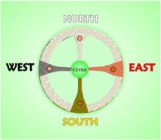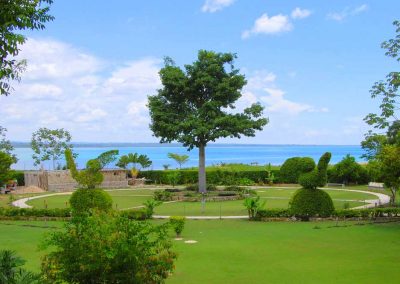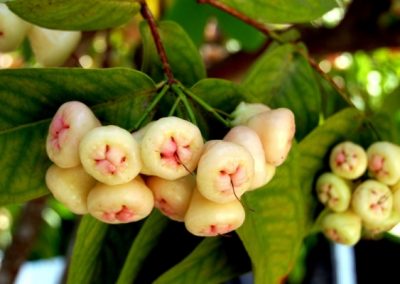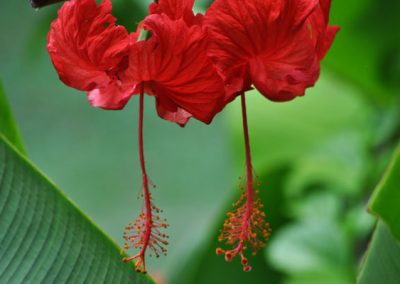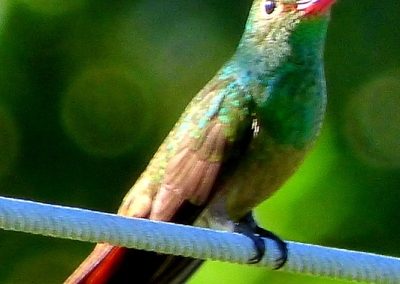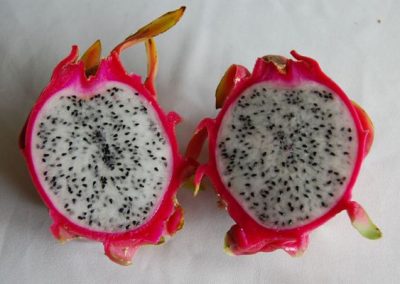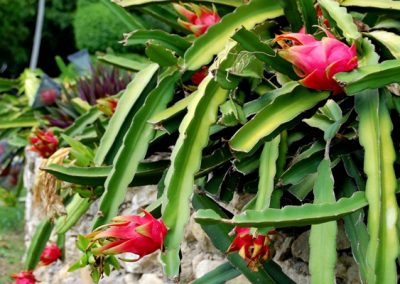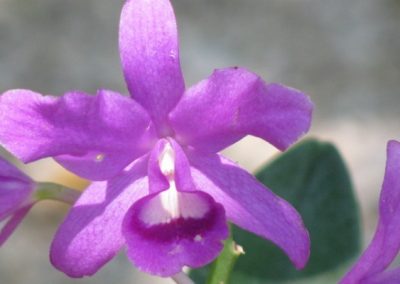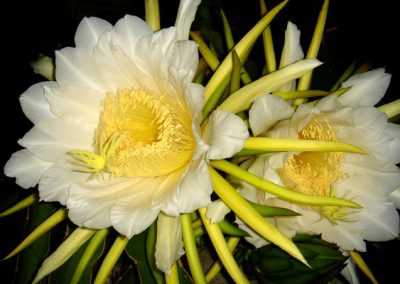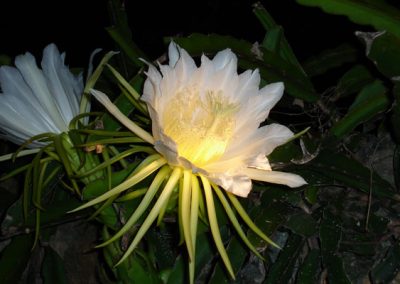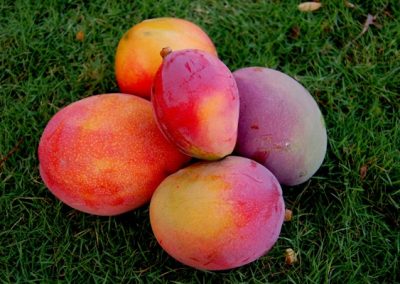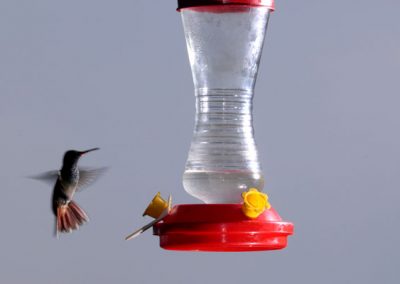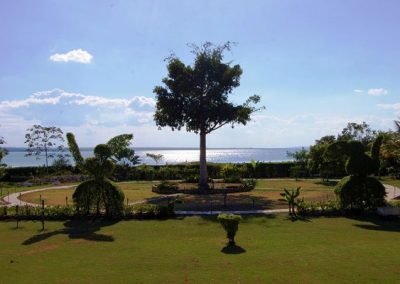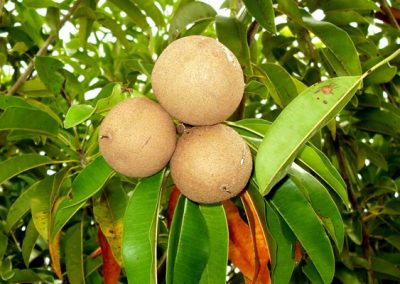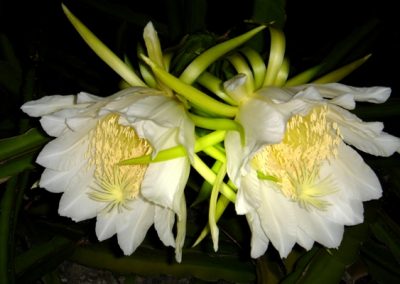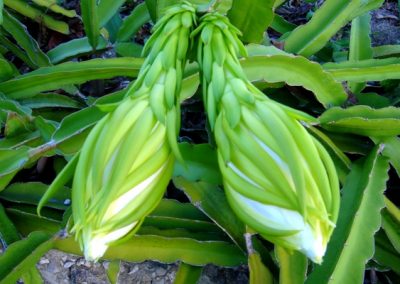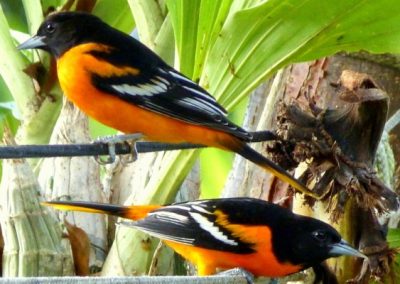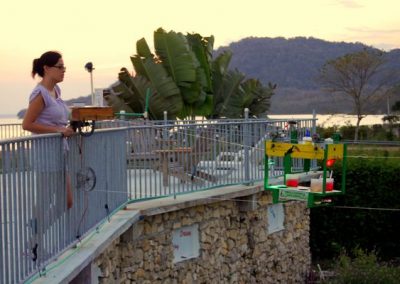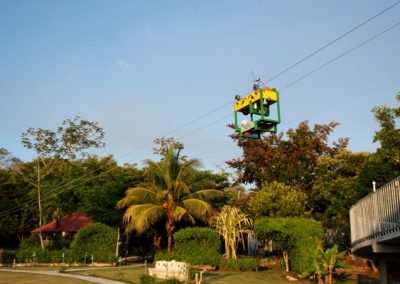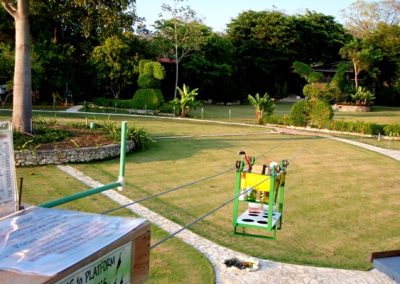
The Garden
One of our most remarked about features, our beautifully landscaped garden is a great place to relax and enjoy the surroundings. We have a variety of exotic plants and fruits from the Petén jungle, several of which are listed in our Garden Guide (PDF download). At the center of the garden you will find our Maya-inspired circle, formed around the sacred Ceiba tree. In the corner, our Cahui observation deck has the best lake view on the property, as well as drink service via the Toucan Express.
Maya Circle and Ceiba tree
The circle you see in our garden is a representation of some of the early Maya beliefs. The center of the garden represents the Maya Universe, with the Sacred Tree of Life, Yaxche (Ceiba), as its axis. Early Maya writings tell us they believed its trunk and branches support the sky and its roots penetrate into the underworld, joining together the three cosmic levels of the Maya universe. It was and for many Maya believed the Ceiba Tree as an energy connection with the Cosmos, Earth, and the Underworld. They also believed this large tree has 13 levels of Heaven through its upper branches. The trunk is the human or physical world and its roots lead to the 9 levels of Xibalba, the underworld. Some present day Maya still hold these beliefs.
The Maya have colors for each of the cardinal points: white in the North, black in the West, yellow in the South, red in the East and Green for the great Ceiba Tree, ‘The King of Trees’, in the center. Each of the cardinal points, which are are represented with colored stones and lights along this circle, has a connection to other productive trees.
In the early years the first Goddess, Ixchel, took four different colors of corn grains, blessed them and moistened them with saliva to assure growth. She then spat them out, one in each of the cardinal points: red corn in the East, black corn in the West, yellow corn in the South and white corn in the North. She then watered them with a mixture containing blood, to give them life. The results were the four skin colors of humans. Ixchel was a very important Maya deity, known also as the Rainbow Goddess, Moon Goddess, and Medicine and Fertility Goddess, with power to assure healthy childbirths, fertile corn crops and more.
East (lak’in) is the direction of sunrise, associated with red (chak), the color of dawn. West (chik’in) is the direction of sunset, the color black (ek’) to symbolize darkness, sun’s death. North (xaman) is white (sak) and is associated with bright light. South (nohol) is yellow (k’an), the color of gold. Green (yax’che) is the color of the center, representing the greatest World Tree itself and all trees, the giant Ceiba Tree (Yax’che) that lifts one to the cosmos.
Why were the Ceiba and other trees so important for the Maya?
For the Maya, the giant and fast growing Ceiba Tree, the ‘Tree of Life,’ or ‘King of Trees’ is the axis and pivot that made flesh of animal and man. The Ceiba sustained its people, but also required hard work and sacrifice from them in the way of service. Probably one of the most important functions of the tree is to give fire wood for baking rocks, turning them into limestone powder (cal) for stucco, used for paving causeways, plastering huge temples, masks and other constructions. Also, the ashes from burning the tree’s wood enrich the soil, resulting in large crop productions. Trees made a living environment greatly needed and praised by the Maya, by producing the material from which the Maya made homes and tools and were the source of many medicines and food, plus other necessary commodities that their culture demanded such as chocolate and Copal (incense). They also provided hardwood for their carved figures, lintels, and firewood for cooking.
Many Maya believe the giant Ceiba Tree is the conduit of communication between the human world and the supernatural world. The souls of the dead fell into the darkness of Xibalba, the underworld, which is believed to be an underground cave. Along the tree’s path were the daily movements of the sun, the moon, the planets, and the stars which follow its trunk. The Feathered Serpent (Kulkulcan), symbolizing communion with the world of the ancestors and the gods, emerged into the world along this route.
Resident birds
Our birdfeeder has become the gathering place for several types of birds – we try to keep bananas around throughout the day to attract them. Some species are present in our garden year round: Montezuma Oropendola, Rufous-tailed Hummingbird, Boat-billed Flycatcher and Golden-fronted Woodpecker. From October to February, the Baltimore Oriole and Blue-grey Tanager can be spotted here. The Collared Aracari has visited on occasion as well.
Cahuí Observation Deck
Completed in October 2011, the open-air Cahuí deck is perfect for viewing breathtaking sunsets over Lake Petén Itzá . On a clear night, you will not find a better place for star-gazing than here. On special occasions, view ceremonies being performed in our Maya garden. Cahuí is the name of the nearby hill, and it means ‘giant crocodile’ in Maya language, because it gives the appearance of a large crocodile swimming into the water. Relax, get some sun, feel the breeze, observe the moon…as a guest, you are free to enjoy the deck as you please!
Toucan Express
Don David’s latest invention, the Toucan Express, is a 200m hand-cranked zipline cart that delivers drinks to the Cahui deck. No need to walk to the restaurant to get a drink, just order via intercom from the deck and your drinks will be sent in a zip! See it in action on our YouTube channel.

